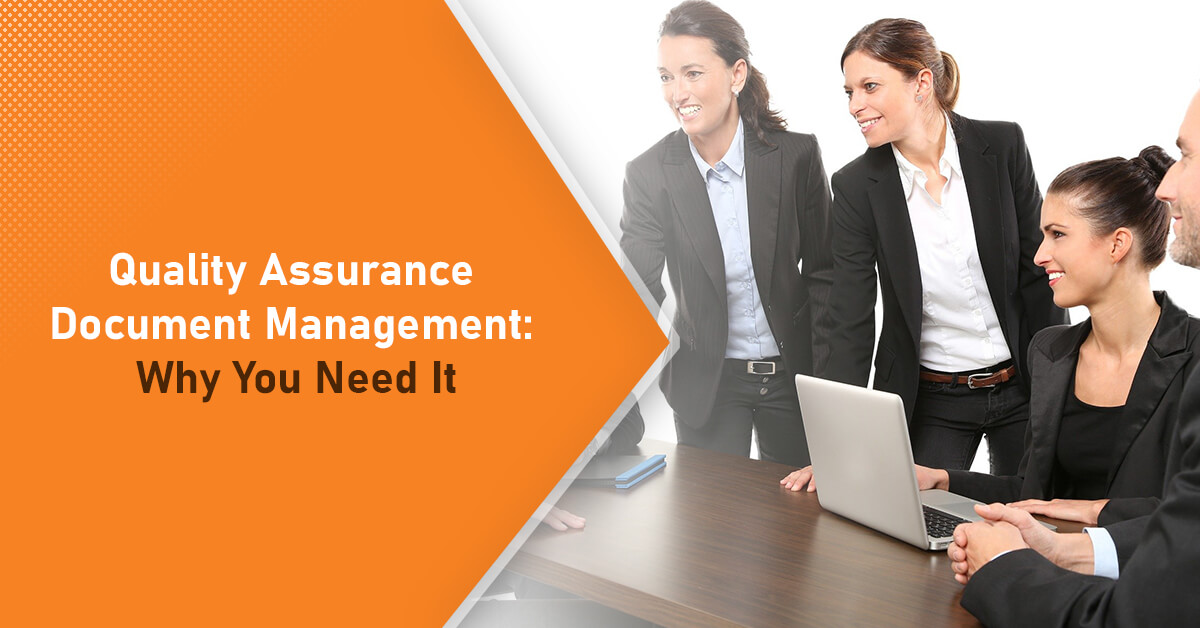
Industry practitioners as well as quality experts would agree that documenting the requirements of their QMS is a prerequisite for businesses to make their quality assurance approach successful. The quality assurance requirements document is useful for a number of purposes and we shall explain them here in this blog.
From promoting management coordination with the staff to causing transparency in the QMS procedures, there are several aspects ensured by proper document control. While these explain why quality assurance document control is crucial for your business, it also adds up to a huge responsibility for your management team. It requires you to prepare, create, approve, assess, and update the documents from time to time, to ensure that they align well with the implemented system.
In the following section, learn about the persuasive reasons that explain why you need to maintain documents for your quality assurance processes.
Better Access Control
Proper documentation introduces stronger access control which means that only relevant or authorised members are going to have access to the quality management procedures, at the right time. Documentation ensures access governance where roles and process responsibilities of each member are properly enumerated. An ineffective paperless QMS where processes and roles of the members are not defined results in confusion and lack of coordination among them. It makes them unable to deliver their responsibilities properly and on time. For this reason, a majority of quality assurance professionals consider access control as the most essential aspect for ensuring accurate delivery of roles by the right staff.
Enhanced Compliance with ISO 9001
Accurate and comprehensive quality assurance requirements documentation can lead to successful ISO 9001 certification on the first try. With proper document control, you can simplify the procedure of complying your QMS with regulatory requirements of the standard. If your organisation is seeking certification, you are required to face an audit known as a certification audit. In the audit process, quality assurance assessors are going to evaluate the capability of your QMS by studying the documents. Once they are convinced of the comprehensiveness of the QMS from the documents, they check whether its requirements match the ISO 9001 standard’s regulatory requirements. This completes the first stage of the audit. In the second stage too, documentation is essential as the auditors see whether all implemented procedures of the QMS are in line with the documented ones.
It is thus clear that without proper documentation, it is impossible to get to the process of certification audit and then achieve ISO 9001 compliance.
Transparency and Protection of Processes
Documentation of your QMS plays an important role in ensuring transparency in the quality control procedures. Stronger access control of the documents also ensures the protection of sensitive quality compliance documents from being accessed by the wrong individuals or external parties. Only authorised members i.e., who belong to the quality management team, are able to quickly access, find, review, retrieve or archive any documents.
Transparency and protection of QMS procedures are ensured by proper documentation due to the following aspects:
• Storing of several document forms such as excel sheets, PDFs, cloud documents
• Restriction of access based on user-identities or roles
• Comprehensive internal audit trails for monitoring documents
• Flexible and easy search procedures
• Ability to make edits, archive, or delete outdated documents
• Mobile and web access to the documents enabling members to view, edit, or share them
Proper document management hence ensures exceptional control of the QMS information and provides a great user experience to the quality management staff. Above all, it supports transparency in quality assurance processes which reduces chances of regulatory risks, waste of time or resources.
Quality Management Efficiency
No doubt, a QMS is a mandatory system to achieve quality compliance and drive a strong quality culture in your organisation. While the entire quality management approach consists of multiple practices and processes, documentation helps you to keep complete track of everything and define the sequence and interaction of those practices and procedures. When processes are documented meticulously defining the roles of relevant employees, it makes them more accountable and helps them deliver their tasks more effortlessly. Moreover, document control helps in keeping them associated with your goals and organisational policies.
Incident Recovery
One of the greatest benefits of documenting your QMS procedures is the identification of risks and handling them effectively for ensuring continued operations. Both digital and paper-based documentation of your quality management can present the risks that have emerged or may emerge in a particular process, product, or service. With the management’s access to the documents, those risks are immediately reported and get addressed with appropriate actions or remedies.
Key Takeaway!
All these above points explain why it is essential to have quality assurance requirements documentation for your business. It helps you have a clear idea of the processes, distribute responsibilities to employees without any disorder, manage risks and ensures visibility of the quality management system. Documentation is also a prerequisite condition for achieving compliance with the ISO 9001 certification and auditors of the certification body are going to check it. Documenting your QMS should be hence your top priority if you are seeking to get ISO certified.
To put it simply, a perfect quality assurance plan works when it is documented well! The documents need to be controlled, reviewed, and updated from time to time, scaling with the organisation’s changing needs.
Need help with your QMS documentation? We, at Compliancehelp have a team of experienced quality assurance professionals having knowledge of various certifications and so can guide you at the documentation procedure.

Get connected with us on social networks!